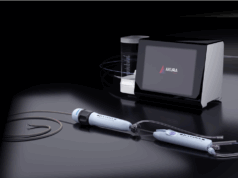
Bristol-Myers Squibb and Pfizer have announced results from a post-hoc early time course subanalysis of the phase 3 AMPLIFY (Apixaban for the initial management of pulmonary embolism and deep vein thrombosis as first-line therapy) trial.
The subanalysis demonstrated Eliquis (apixaban) was comparable to conventional therapy (subcutaneous enoxaparin overlapped and followed by oral warfarin dose-adjusted to an international normalised ratio of 2:3) in recurrent venous thromboembolism and venous thromboembolism-related death with significantly less major bleeding during the first seven, 21 and 90 days after starting treatment. These data were published in Thrombosis and Haemostasis.
“For the millions of patients worldwide who experience venous thromboembolism, the risks of recurrence and major bleeding are highest during the first few weeks of anticoagulant therapy,” said Giancarlo Agnelli, professor of Internal Medicine at the University of Perugia, Italy, director of the Department of Internal and Cardiovascular Medicine and Stroke-Unit at the University Hospital in Perugia, Italy, chair of the AMPLIFY Steering Committee, and co-author of the publication. “These findings indicate that the favourable benefit-to-risk profile of Eliquis was demonstrated early during treatment for venous thromboembolism, including the use of a higher Eliquis dose of 10mg twice daily for the initial seven days.”
The results of the subanalyses at each pre-specified time interval were consistent with the overall results of the AMPLIFY trial at six months, which demonstrated non-inferiority of Eliquis versus conventional therapy in the primary efficacy endpoint of recurrent venous thromboembolism and venous thromboembolism-related death, and superiority in the primary safety endpoint by showing significantly fewer major bleeding events, with a 69% relative risk reduction (absolute risk reduction of 1.1 percentage points [95% CI, -1.7 to -0.6]) compared to conventional therapy.
In this post-hoc early time course subanalysis, recurrent venous thromboembolism and venous thromboembolism-related death at seven, 21, and 90 days after starting treatment occurred in 18 (0.7%), 29 (1.1%), and 46 (1.8%), patients who were given Eliquis, respectively, and in 23 (0.9%), 35 (1.3%), and 58 (2.2%) patients given conventional therapy, respectively. Outcomes at each time point were similar in patients by index event (deep vein thrombosis alone or pulmonary embolism with or without deep vein thrombosis) and were consistent with the results for the entire study period. Major bleeding at the corresponding time points occurred in three (0.1%), five (0.2%), and 11 (0.4%) patients, who received Eliquis, respectively, and in 16 (0.6%), 26 (1%), and 38 (1.4%) patients given conventional therapy, respectively. Eliquis was non-inferior to conventional therapy in recurrent venous thromboembolism and venous thromboembolism-related death at each time point analysed, with no excess of early recurrences; and patients treated with Eliquis were less likely to have major bleeding early in the course of treatment than those treated with conventional therapy.
The AMPLIFY trial was a double-blind, randomised, multicentre study that compared the efficacy and safety of Eliquis (at a dose of 10mg orally twice daily for seven days, followed by 5mg orally twice daily for six months) with those of conventional therapy in 5,395 patients with symptomatic proximal deep vein thrombosis or symptomatic pulmonary embolism with or without deep vein thrombosis. The primary efficacy outcome was the incidence of the adjudicated composite of recurrent symptomatic venous thromboembolism or death related to venous thromboembolism that occurred by the end of the treatment period. The primary safety outcome was adjudicated major bleeding that occurred by the end of the treatment period.
For this subanalysis, efficacy and safety outcomes were analysed for days seven, 21, and 90 after randomisation, substratified for the index event (deep vein thrombosis alone, or pulmonary embolism with or without deep vein thrombosis).













